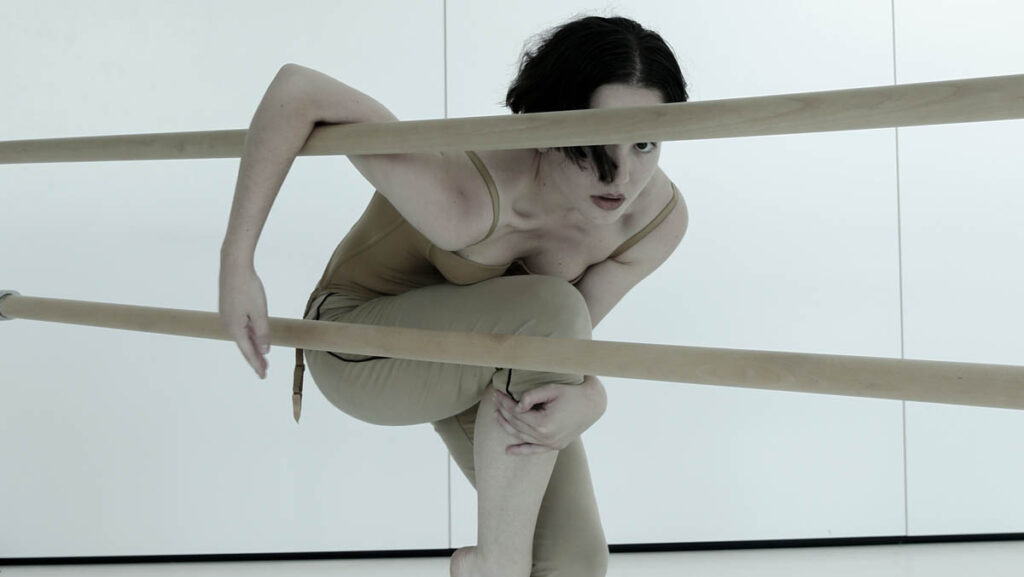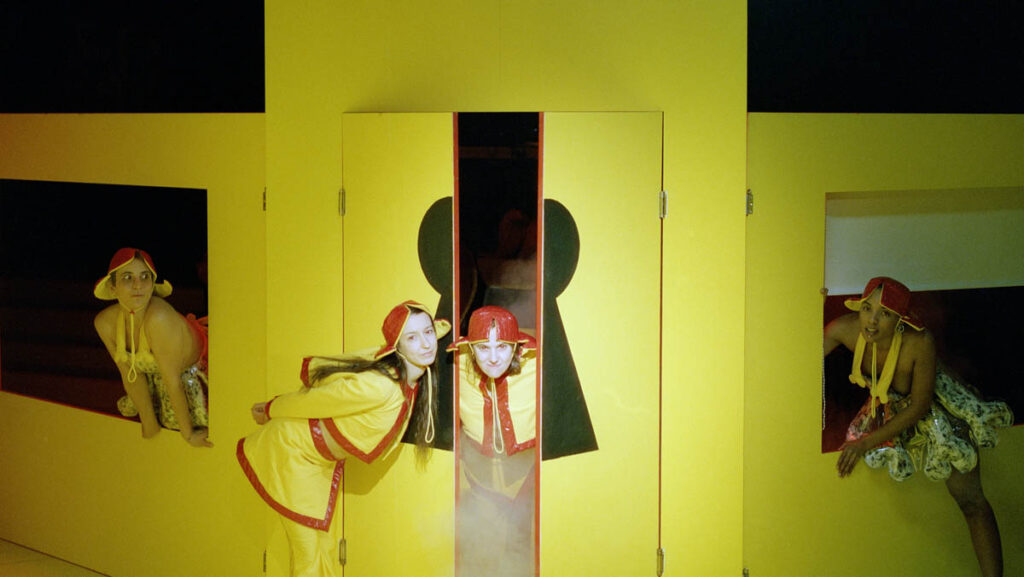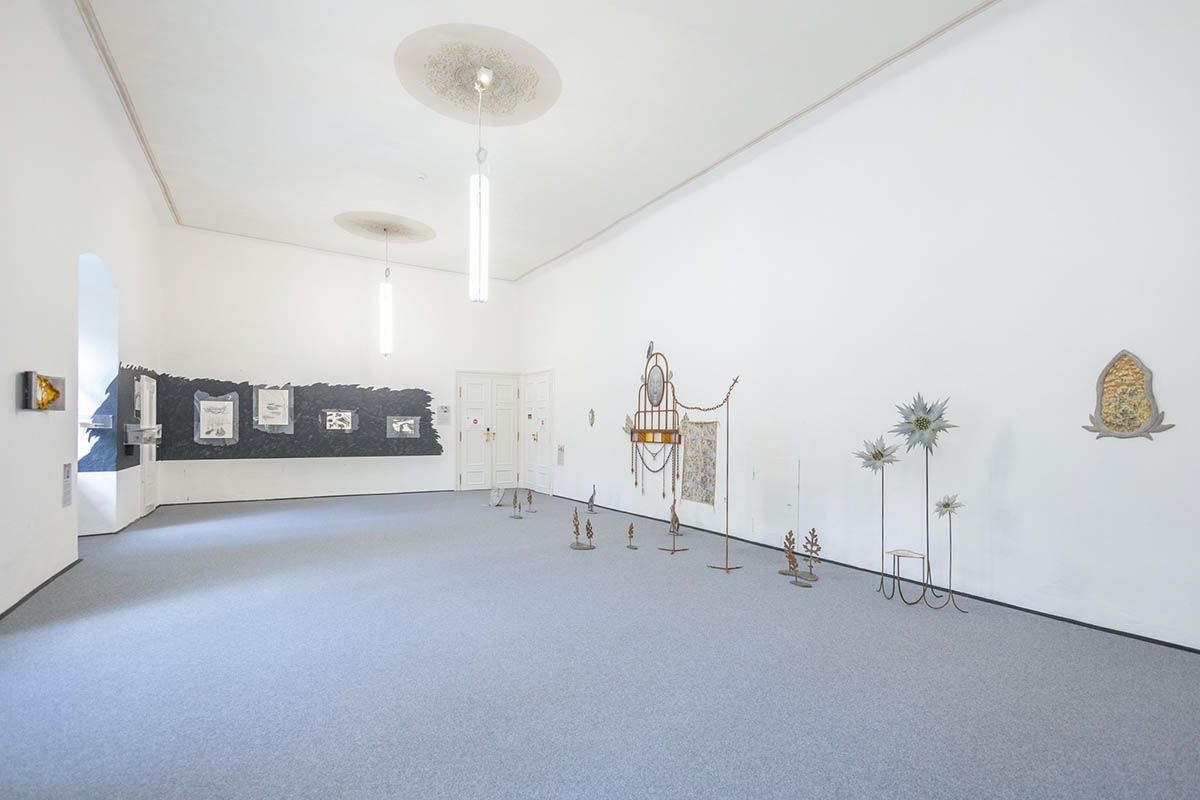
After the exhibition of 18 nominated artistic positions of 2023 in the Hungarian Ludwig Múzeum in Budapest, curated by Vitus Weh, the follow-up exhibition “Den Rahmen Sprengen – Breaking the Frame,” curated by Katharina Hoffmann, has been on display in the palace Esterhazy since 14 April 2024. It showcases selected works by the three recipients of the 2023 award and the winner of the first Audience Award.
The exhibition is on view in the so-called Weißer Saal of the palace, a tall, spacious, and light-filled room. As part of the baroque building, it likely served as one of several rooms designed to represent and display the wealth and elite status of the noble family, exhibiting qualities such as elegance, purity, and luxury – a symbol of good taste and sophistication. With its white walls and open layout, the space allows the art to stand out without distraction.
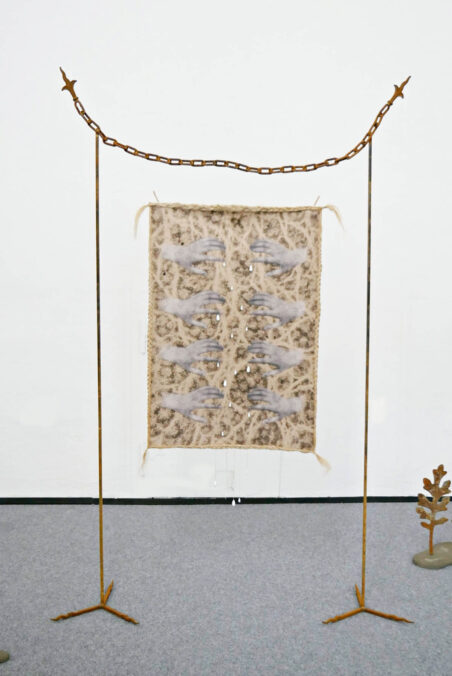
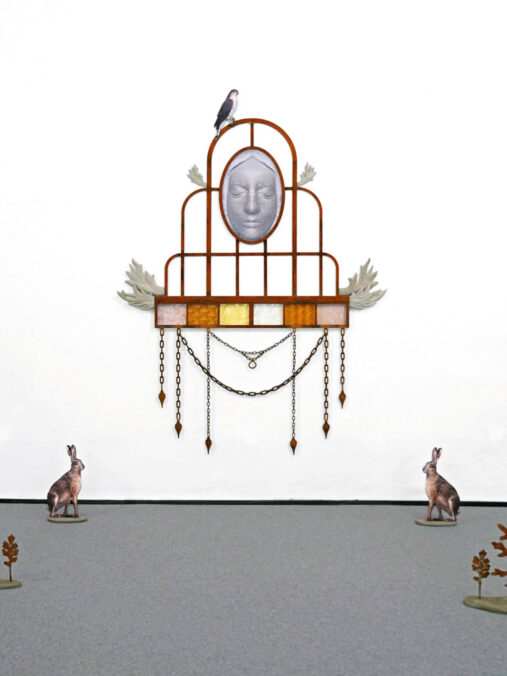
However, there lies another, transformative potential in this act of repurposing. Since 2018, Vitus Weh has introduced an essential shift from the room’s original purpose through exhibitions, utilizing this historically charged environment to showcase contemporary art. This recontextualization subverts the traditional values associated with the Weißer Saal, transforming it from a space of historical prestige into a platform for diverse and often marginalized narratives. In February 2024, Katharina Hoffmann took over the curation of the annual exhibitions in Eisenstadt, showcasing works from Hungary’s emerging artists and transforming the Weißer Saal into a space for dialogue between past and present.
Karina Mendreczky and Katalin Kortmann-Járay’s installation “Für Frau Gergely” exemplifies this shift by leaving its frame, spilling sculpturally into three-dimensional space. Inspired by the 1681 witch trial of Szabó Gergelyné and the misogynistic principles of the “Malleus Maleficarum,” the artists have created a piece that elevates Gergelyné’s story from one of historical victimization to a symbol of feminist resistance. The installation’s gothic-inspired frame and stained glass evoke sacred altarpieces, positioning Gergelyné within a context of martyrdom and advocacy against historical misogyny. This artistic intervention reclaims the Weißer Saal’s space, transforming it into a site of reflection on past injustices and present struggles for gender equality.
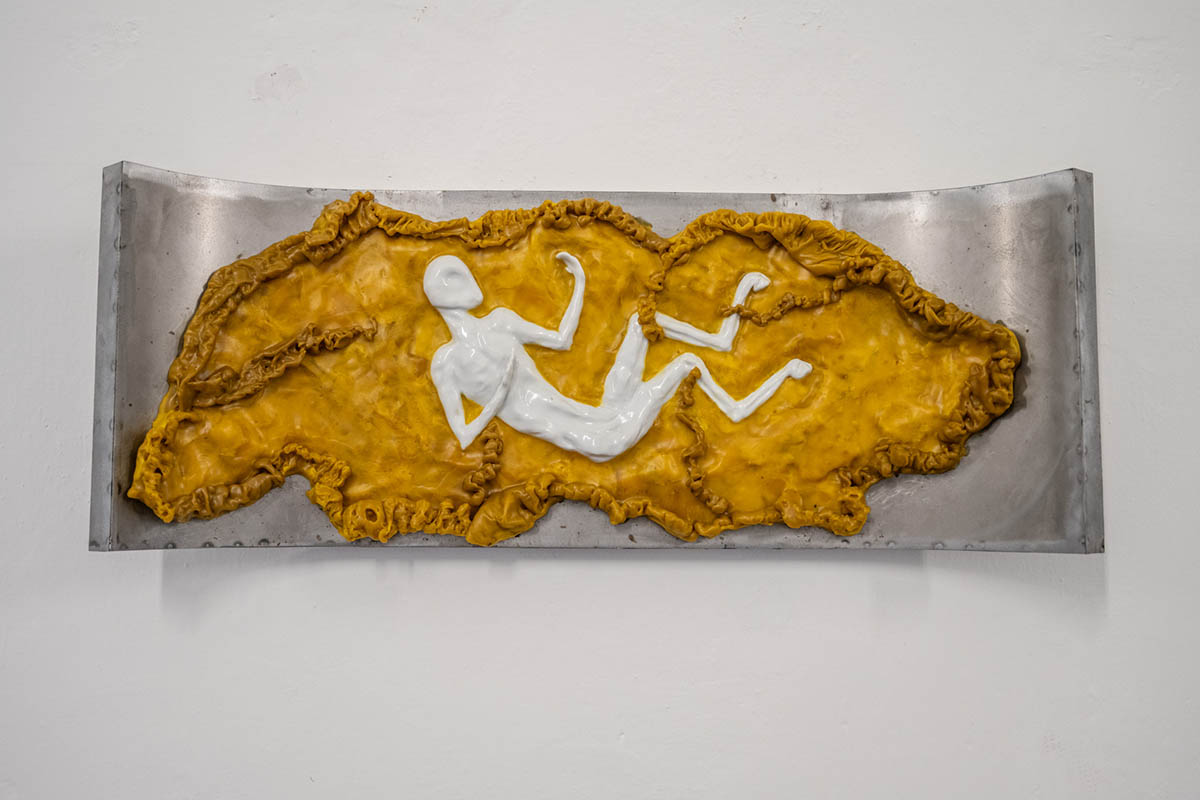
Gideon Horváth’s work further engages with the theme of reinterpretation by using the faun, a mythological figure representing both human and animal qualities, to explore queer identities. His reliefs, made from a combination of beeswax, porcelain, and metal, juxtapose warm, inviting materials with cold, rigid ones, mirroring the complexity and fluidity of queer experiences. Traditionally seen as an ambiguous and liminal figure, the faun becomes a powerful symbol of resistance against conventional categorizations. Suitably, the frame of his piece “Unsung Tales” bends its metal frame as if it could no longer maintain its rigid flatness. His work challenges binary notions of identity and celebrates the multifaceted nature of human existence, inviting a richer, more nuanced understanding of identity.
Dominika Trapp’s “Entangled, Engaged, Ensnared” adds another layer of complexity to the exhibition by merging historical and fictional graphic elements. Drawing from Hungarian trap mechanisms she has been studying since 2021, Trapp’s detailed ink drawings are set against a surreal, textured black backdrop, transforming these functional objects into symbols of entanglement and constraint. The contrast between the meticulously rendered traps and the disjointed black horizon strip that the artist painted with free strokes reflects a tension between the mechanical and the natural, the real and the imagined. Trapp’s work elevates traditional motifs into a symbolic and visionary realm, reimagining landscape painting through a contemporary lens.
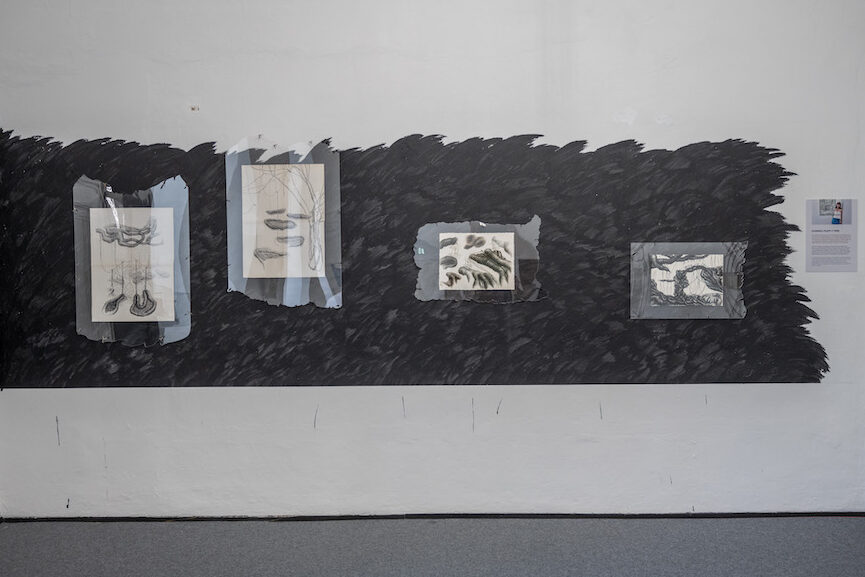
Rita Süveges’s “Infrastructure” series, awarded the newly introduced Audience Award, can be interpreted as a version of the exhibition’s themes that blends them with softness and subtlety, reflected in the velvet material and the blurred edges of her motifs. Combining oil paint with soft velvet and wooden elements, Süveges creates a tactile experience that evokes a quiet dialogue between the past and the future. The smooth texture of the velvet and the organic presence of the wood create a sense of gentle transition, where historical and futuristic visions merge seamlessly. Inspired by 3D renderings and traditional oil techniques, her work invites the viewer into a more nuanced, multi-dimensional reflection on the evolving relationship between technology and human experience.
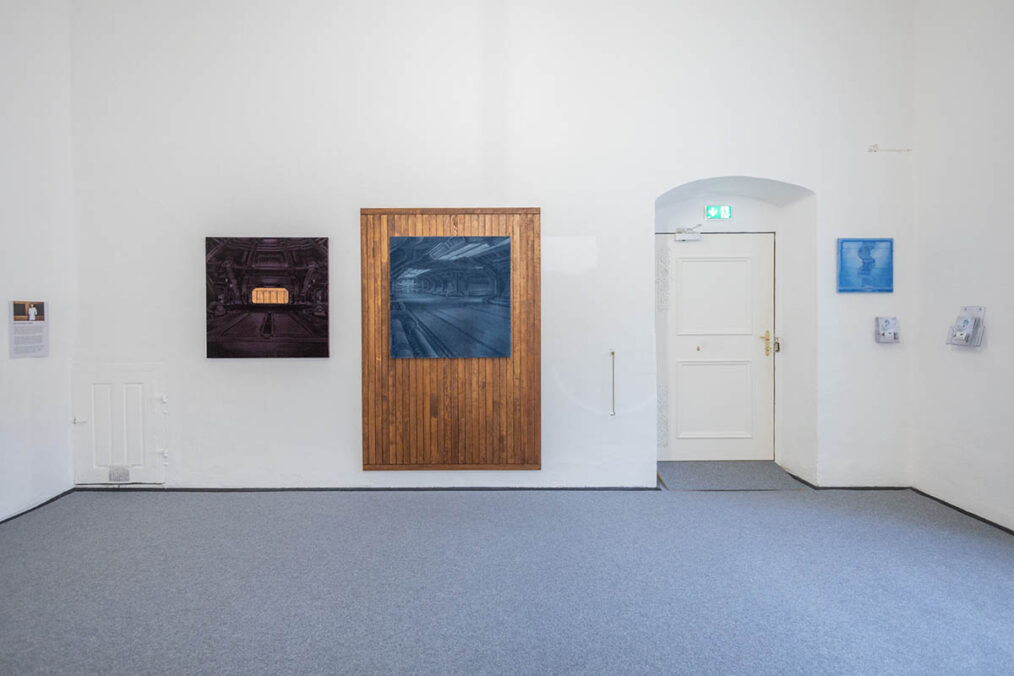
The exhibition will remain on view until December 31, 2024, and will close in anticipation of the Esterházy Art Award 2025, which opens on June 5, 2025, at the Ludwig Múzeum in Budapest. Hungarian artists are invited to apply online for the award by January 31, 2025, through the following link. The exhibition will be curated by Vitus Weh.
Exhibition: Breaking the Frame – Den Rahmen Sprengen. Esterházy Art Award 2023
Duration: 14 April 2024 – 31 December 2024
Curator: Katharina Hoffmann (Now Esterhazy Contemporary)
Artists: Gideon Horváth, Karina Mendreczky & Katalin Kortmann-Járay, Rita Süveges, Dominika Trapp
Address and contact:
Schloss Esterhazy
Esterhazyplatz 1, 7000 Eisenstadt
www.esterhazy-now.at




